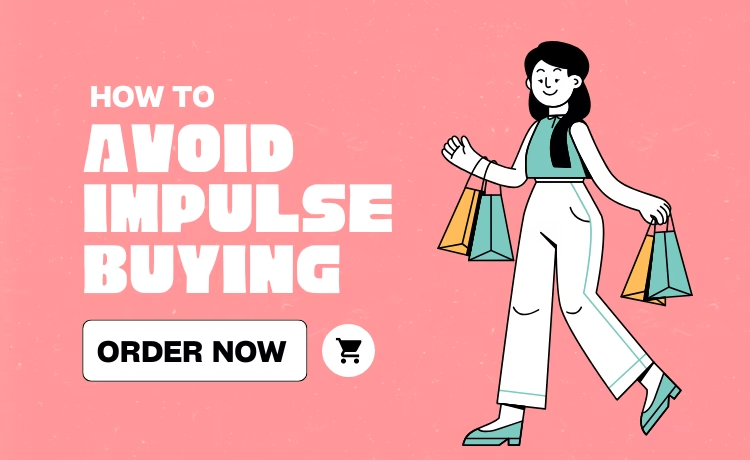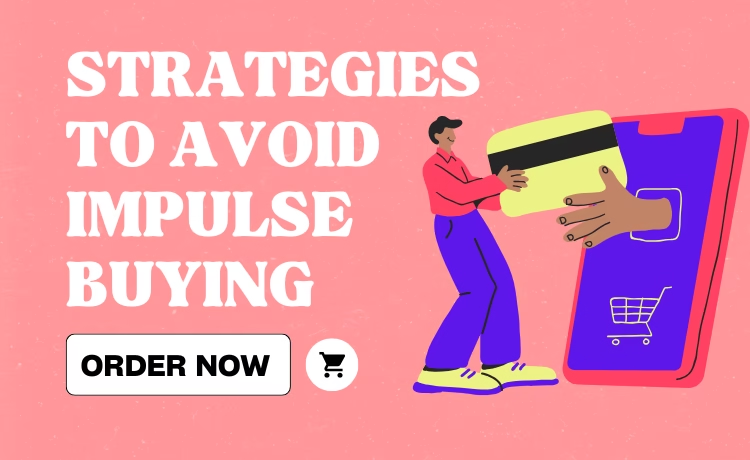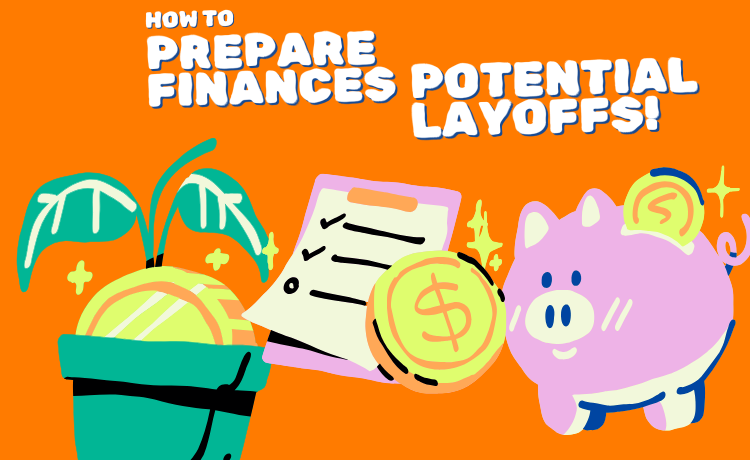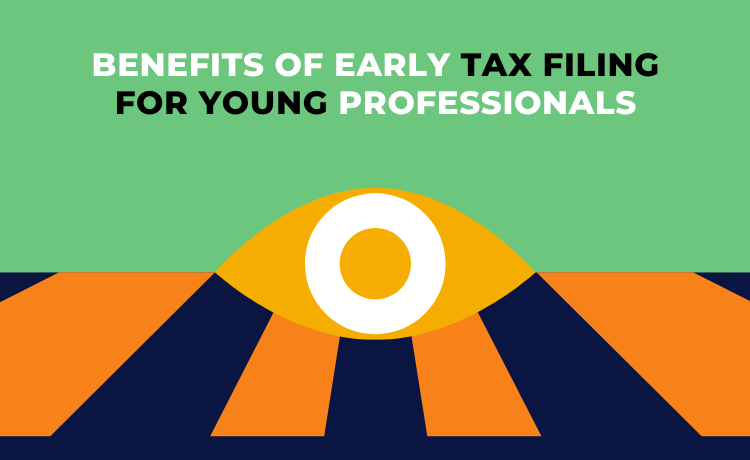Picture this: You’re standing in the checkout line, just waiting to pay for groceries, when a flashy display catches your eye. A new gadget or a tempting snack you hadn’t planned on buying finds its way into your cart.
Before you know it, you’re back home, unbagging more than you intended! Sound familiar? You’re not alone! Impulse buying gets the best of even the savviest shoppers—but that doesn’t mean you can’t beat it. Today, we’ll break down why we make those unplanned purchases and, most importantly, how you can stop them in their tracks while boosting your savings.

What we have cover!
- 1 What Is Impulse Buying? The Secret Psychology Behind the Splurge
- 2 The Most Common Triggers for Impulse Buying
- 3 8 Winning Strategies to Avoid Impulse Buying
- 3.1 1. Make a Shopping List (And Stick to It!)
- 3.2 2. Follow the 24-Hour Rule
- 3.3 3. Unsubscribe from Promotional Emails and Notifications
- 3.4 4. Set a Spending Limit
- 3.5 5. Track Every Purchase
- 3.6 6. Identify Your Emotional Triggers
- 3.7 7. Avoid Shopping When Hungry, Angry, Lonely, or Tired (H.A.L.T.)
- 3.8 8. Reward Yourself Wisely
- 4 The Best Tools and Apps to Keep Impulse Spending in Check
- 5 FAQS About Impulse Buying
- 6 Real-Life Examples: From Overspenders to Super Savers!
- 7 Take Charge of Your Spending and Reap the Rewards
What Is Impulse Buying? The Secret Psychology Behind the Splurge
Impulse buying is when you make an unplanned purchase, often driven by an emotional reaction rather than necessity or premeditated thought. It can be as simple as picking up gum at the register, splurging on the latest tech, or snagging a cute top just because it’s on sale.
But why do we do it? Marketers are masters of using psychology against us. Retail environments are designed to make you feel good and act fast. According to a study from The Journal of Consumer Research, the thrill of getting something new activates reward centres in our brain, making spur-of-the-moment spending feel gratifying, even if we regret it later (source).
The Most Common Triggers for Impulse Buying
Recognising your impulse triggers is a huge part of breaking the habit! Here are a few of the most common culprits:
- Sales and Limited-Time Offers: “Only 2 hours left!” triggers FOMO (fear of missing out) and rushes your decision-making.
- Retail Therapy: Emotional highs or lows (like celebrating a win or nursing a bad day) often lead to unnecessary purchases.
- Online Shopping Cart Prompts: “Spend $10 more for free shipping!” pushes you to buy more.
- Social Media Influence: Seeing friends and influencers rave about products can spark envy and imitation.
- Easy Payment Methods: With one-click-buy, tapping “Add to cart” is effortless.
- Store Layouts & Sensory Stimuli: Strategic product placement, music, and scents can make you linger longer and buy impulsively.
Recognising these triggers is the first step in resisting them!
8 Winning Strategies to Avoid Impulse Buying
Take back your financial freedom! Here’s how:

1. Make a Shopping List (And Stick to It!)
Before you step foot in any store, list what you truly need. Research from Psychology Today shows that shoppers with a purpose are far less likely to pick up extras.
Creating a shopping list before heading to the store or browsing online can significantly reduce impulse purchases. By outlining exactly what you need, you establish clear intentions, making it easier to resist unplanned items. This approach not only helps in staying focused but also in managing your budget effectively.
According to financial experts, having a predetermined list can act as a safeguard against the allure of sales and promotions that often lead to unnecessary spending . Additionally, sticking to your list encourages mindful consumption, ensuring that your purchases align with your actual needs rather than momentary desires.
2. Follow the 24-Hour Rule
When tempted by a non-essential item, give yourself a 24-hour cooling-off period before making the purchase. This delay allows time to assess whether the item is truly necessary or just a fleeting desire. Often, the initial urge diminishes after a day, leading to more rational decision-making.
This practice is particularly effective in curbing emotional spending and promoting financial discipline . By pausing, you create space to evaluate the item’s value and relevance to your life, reducing the likelihood of buyer’s remorse.
3. Unsubscribe from Promotional Emails and Notifications
Reducing exposure to marketing materials can help minimize impulse buying. Retailers often use targeted emails and app notifications to entice consumers with limited-time offers and exclusive deals. By unsubscribing from these communications and disabling non-essential notifications, you decrease the chances of being lured into spontaneous purchases. This proactive approach fosters a more intentional shopping environment, allowing you to focus on genuine needs rather than succumbing to external prompts .
4. Set a Spending Limit
Establishing a monthly budget for discretionary spending can provide a structured framework for your finances. By allocating a specific amount for non-essential purchases, you create boundaries that help prevent overspending.
This method encourages thoughtful consideration of each purchase, ensuring that your spending aligns with your financial goals. Utilizing budgeting tools or apps can aid in tracking expenses and maintaining accountability, further reinforcing disciplined spending habits .
5. Track Every Purchase
Awareness is everything! Use your phone or a simple notepad to note down every non-essential buy. You’ll be surprised at how “small” purchases add up. Maintaining a record of your expenditures increases awareness of your spending patterns.
By documenting each purchase, you can identify trends, recognize triggers for impulse buying, and make informed adjustments to your habits. This practice promotes financial mindfulness, enabling you to evaluate the necessity and value of your purchases. Over time, tracking expenses can lead to more deliberate spending decisions and improved financial well-being .
6. Identify Your Emotional Triggers
If you tend to shop when stressed or bored, find healthier substitutes like taking a walk, calling a friend, or practising mindfulness. Understanding the emotional factors that drive impulse buying is crucial in developing healthier spending habits. Feelings of stress, boredom, or sadness can often lead to unplanned purchases as a form of temporary relief.
By recognizing these triggers, you can implement alternative coping strategies, such as engaging in physical activity, practicing mindfulness, or seeking social support. Addressing the underlying emotions reduces reliance on shopping as a coping mechanism, fostering emotional resilience and financial stability
7. Avoid Shopping When Hungry, Angry, Lonely, or Tired (H.A.L.T.)
Emotional states can significantly influence purchasing decisions. Shopping while hungry, angry, lonely, or tired—collectively known as H.A.L.T.—can impair judgment and increase susceptibility to impulse buys. By being mindful of your emotional and physical state before shopping, you can make more rational choices. If you find yourself in any of these conditions, consider postponing shopping trips or online browsing until you’re in a more balanced state, thereby reducing the likelihood of regrettable purchases . It sounds simple, but avoiding stores when you’re vulnerable can dramatically reduce impulse buys (source: Consumer Affairs).
8. Reward Yourself Wisely
Incorporating planned rewards into your financial strategy can satisfy the desire for indulgence without compromising your budget. By setting specific goals and allocating funds for occasional treats, you create a system that balances enjoyment with fiscal responsibility.
This approach transforms spending into a deliberate act of self-reward, reinforcing positive behavior and reducing the temptation for spontaneous, unplanned purchases. Celebrating milestones in this manner supports sustained financial discipline and personal satisfaction. Instead of spontaneous sprees, plan a special treat after hitting a savings goal. This turns spending into something meaningful and earned!
The Best Tools and Apps to Keep Impulse Spending in Check
Want a digital edge in your fight against impulse buying? Harness the power of technology:
- Mint (mint.intuit.com): Tracks your spending, sets budgets, and alerts you when you’re close to the limit.
- YNAB (You Need a Budget) (ynab.com): Focuses on proactive budgeting and long-term savings goals.
- PocketGuard (pocketguard.com): Shows how much you can safely spend at a glance.
- Honey (joinhoney.com): Finds deals and applies coupons, helping cut unnecessary costs.
- Goodbudget (goodbudget.com): Uses the classic envelope method in a modern, app-based approach.
Many of these apps also include expense tracking, allowing you to spot spending patterns and make more intelligent choices.
Also learn Guide to Using Cashback Apps Effectively and Saving Big
FAQS About Impulse Buying
Q: Is all impulse buying bad?
A: Not always! Occasional treats can be part of a balanced approach, as long as you budget for them and stay mindful. Treating yourself occasionally can boost your mood, as long as it doesn’t derail your financial goals.
Q: How common is impulse buying?
A: Pretty standard! According to CNBC, Americans spend an average of $276 monthly on impulse buys. Emotions, marketing tactics, or the convenience of online shopping often influence these purchases, so if you’ve ever added something to your cart “just because,” you’re not alone.
Q: Does impulse buying affect my mental health?
A: Yes, it can. Overspending might provide a temporary thrill, but it can lead to stress, guilt, and anxiety if it creates financial strain. On the other hand, learning to manage spending can boost your confidence and improve your overall sense of economic well-being, giving you peace of mind and control over your budget.
Q: What if I want something?
A: Sleep on it! Delaying a purchase gives you time to assess whether it’s worth it or just an impulsive desire. If it still feels important the next day, budget for it and enjoy your purchase guilt-free. This mindful approach can help you balance treating yourself with sticking to your financial goals.
Real-Life Examples: From Overspenders to Super Savers!
Case Study #1:
Sarah, a 32-year-old teacher, went over budget every month thanks to unplanned online shopping after work. She started using YNAB and set alerts for non-essential purchases. She saved over $500 within three months, and her daily stress about money vanished.
Case Study #2:
After a holiday shopping binge left college student James in the red, he resolved to try the 24-hour rule. The result? He discovered he didn’t want most of those impulse items a day later! James uses Mint to budget, setting aside “fun money” without guilt.
Case Study #3:
A survey by Finder found that Gen Z shoppers are especially prone to social-media-driven impulse buys (source Finder). A coaching session at their bank, plus installing Goodbudget, helped one teen see that saving for a concert was far more rewarding than another fast-fashion haul.
These stories prove it’s possible to break impulse buying cycles with the right mindset and tools!
Take Charge of Your Spending and Reap the Rewards
Impulse buying may feel exciting in the moment, but consistent, mindful shopping brings lasting joy and security. You can turn impulse into intention by understanding the triggers and arming yourself with practical strategies and digital tools! Every saved dollar moves you closer to your goals.
Think about your next shopping trip. What will you do differently? Start with one or two strategies from this list, download an app that fits your style, and keep track of your wins. Share your progress or struggles in the comments, or check out our complete guide on smart saving habits here.
Cut back on regrets and pump up those savings goals. You’ve got this!

